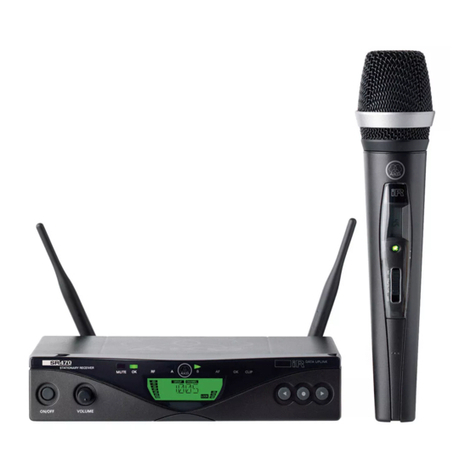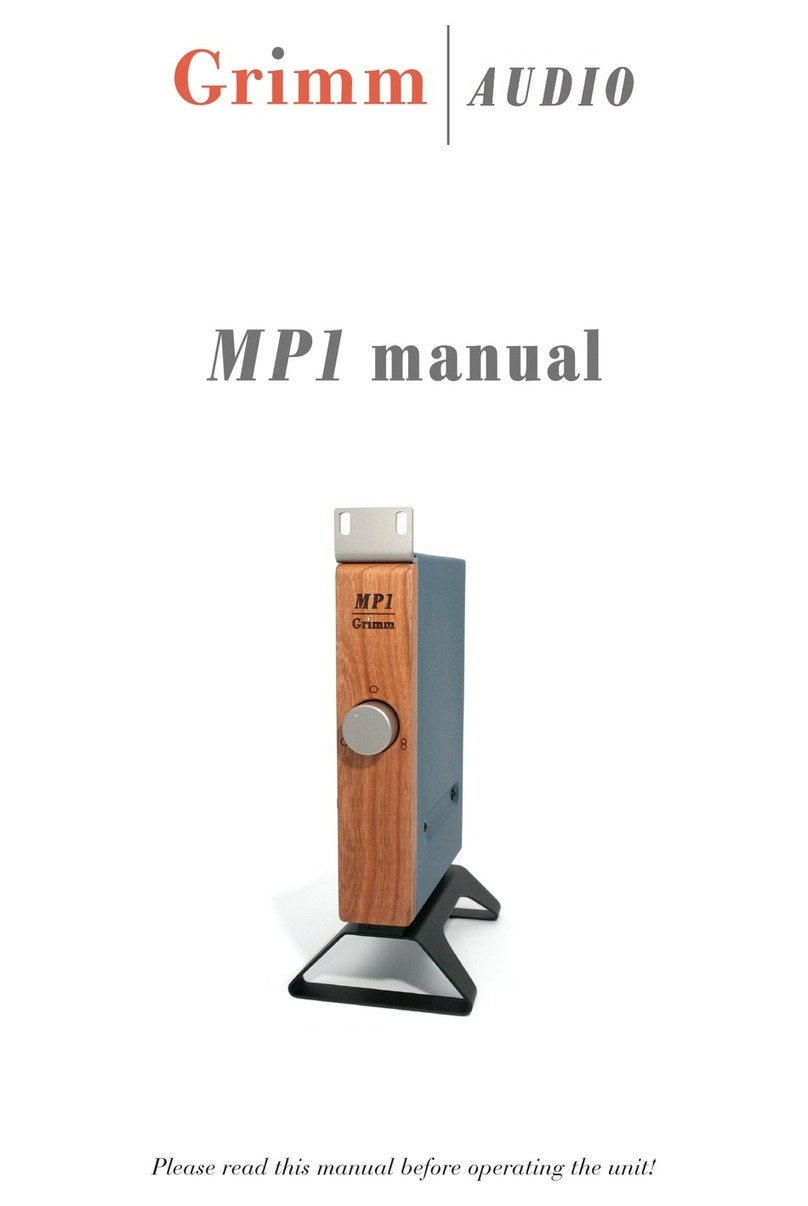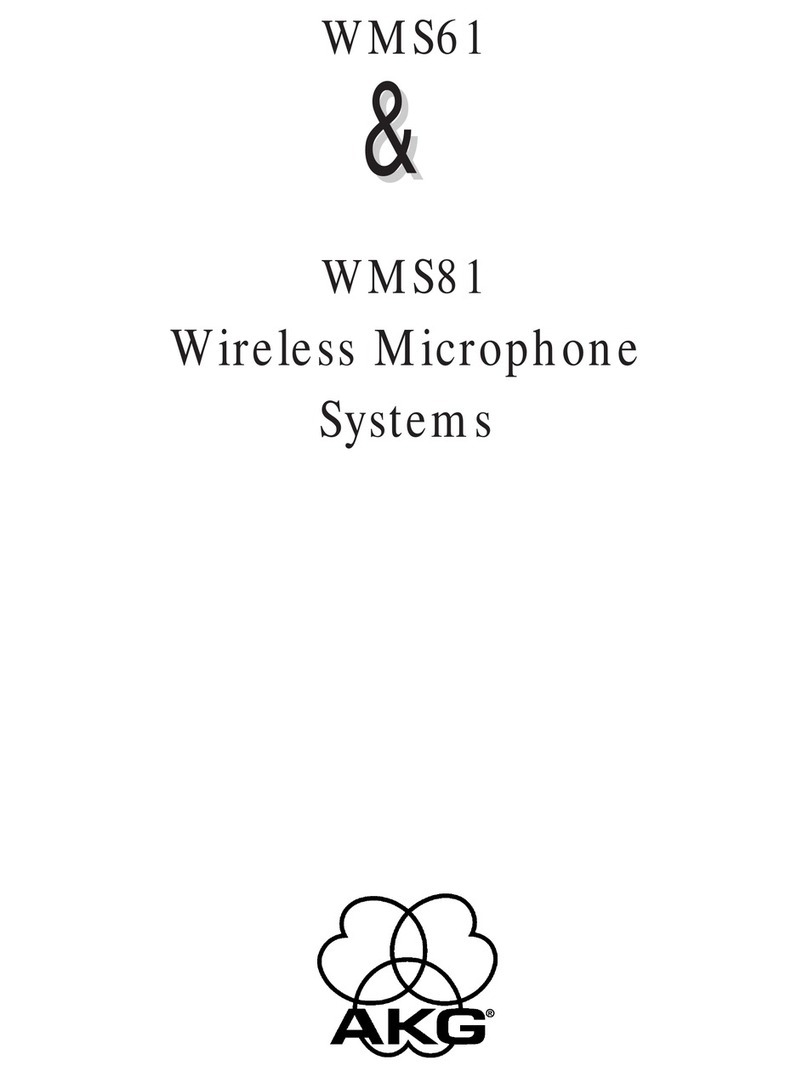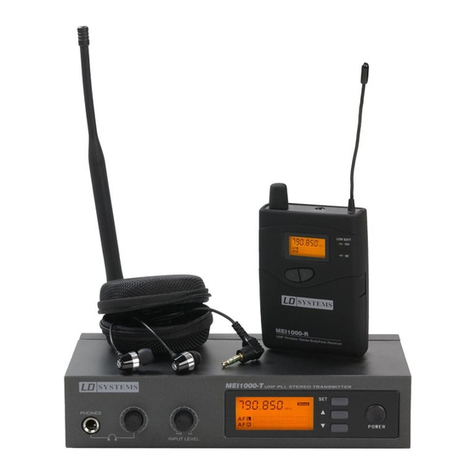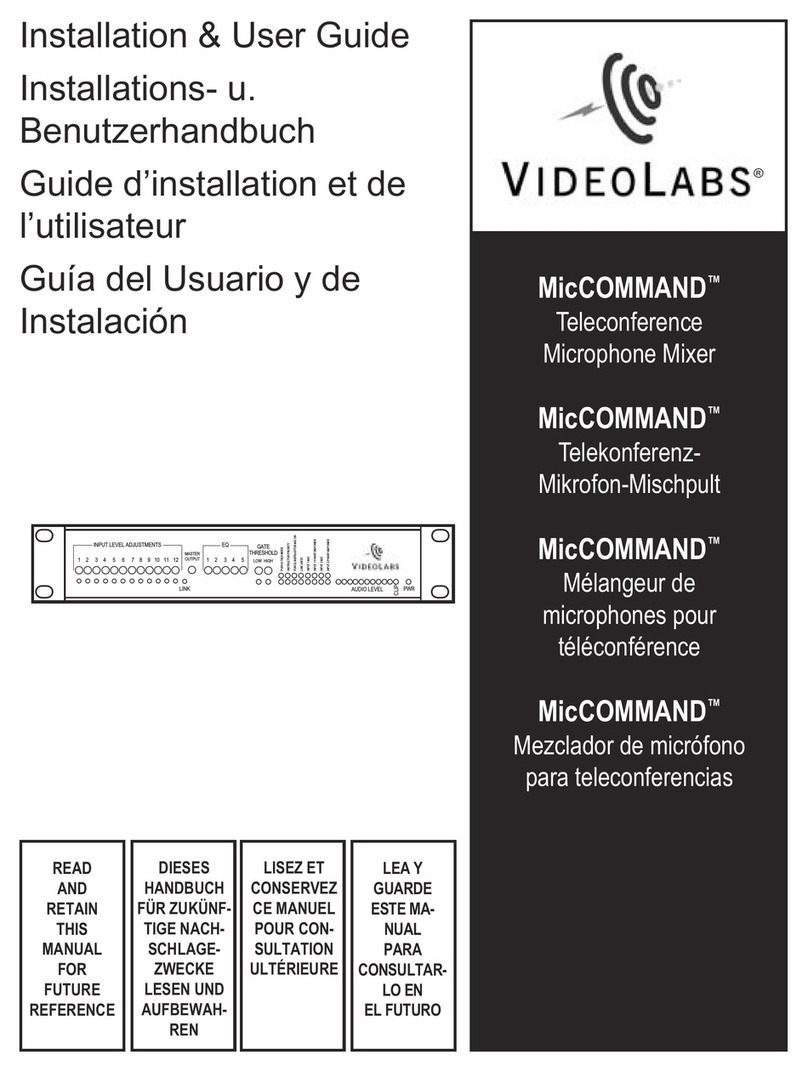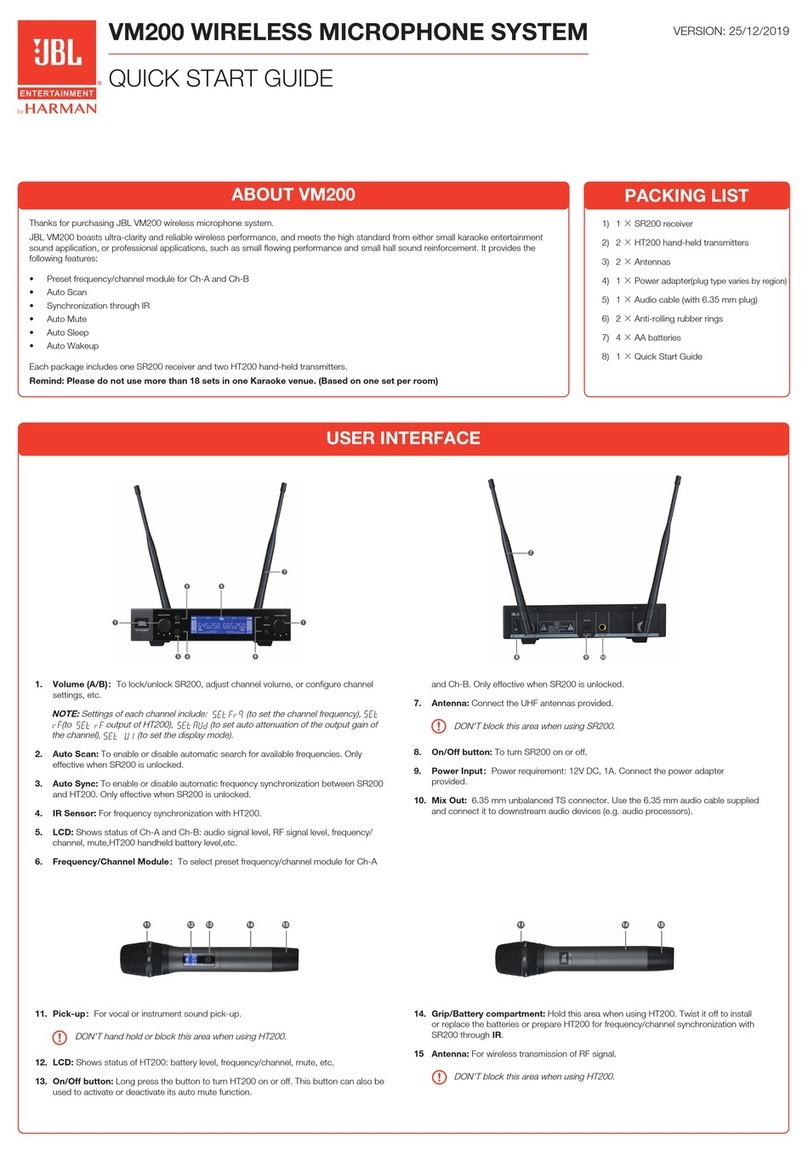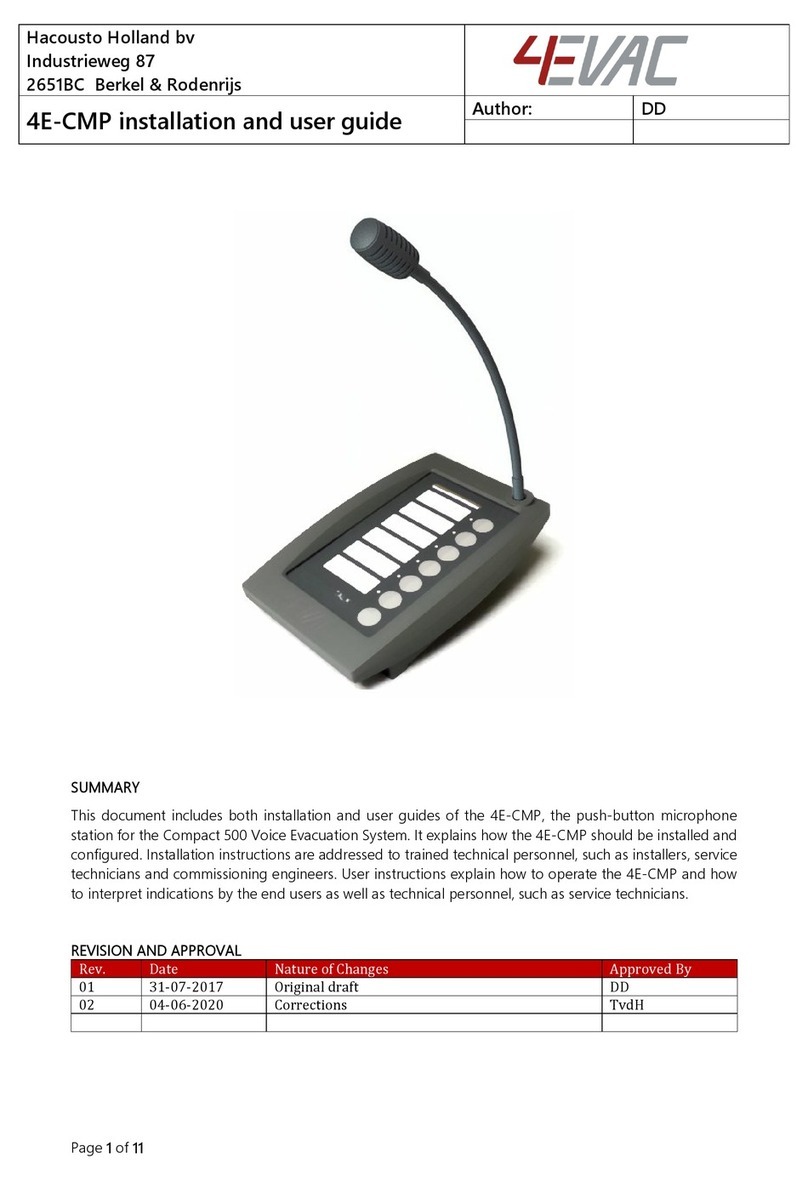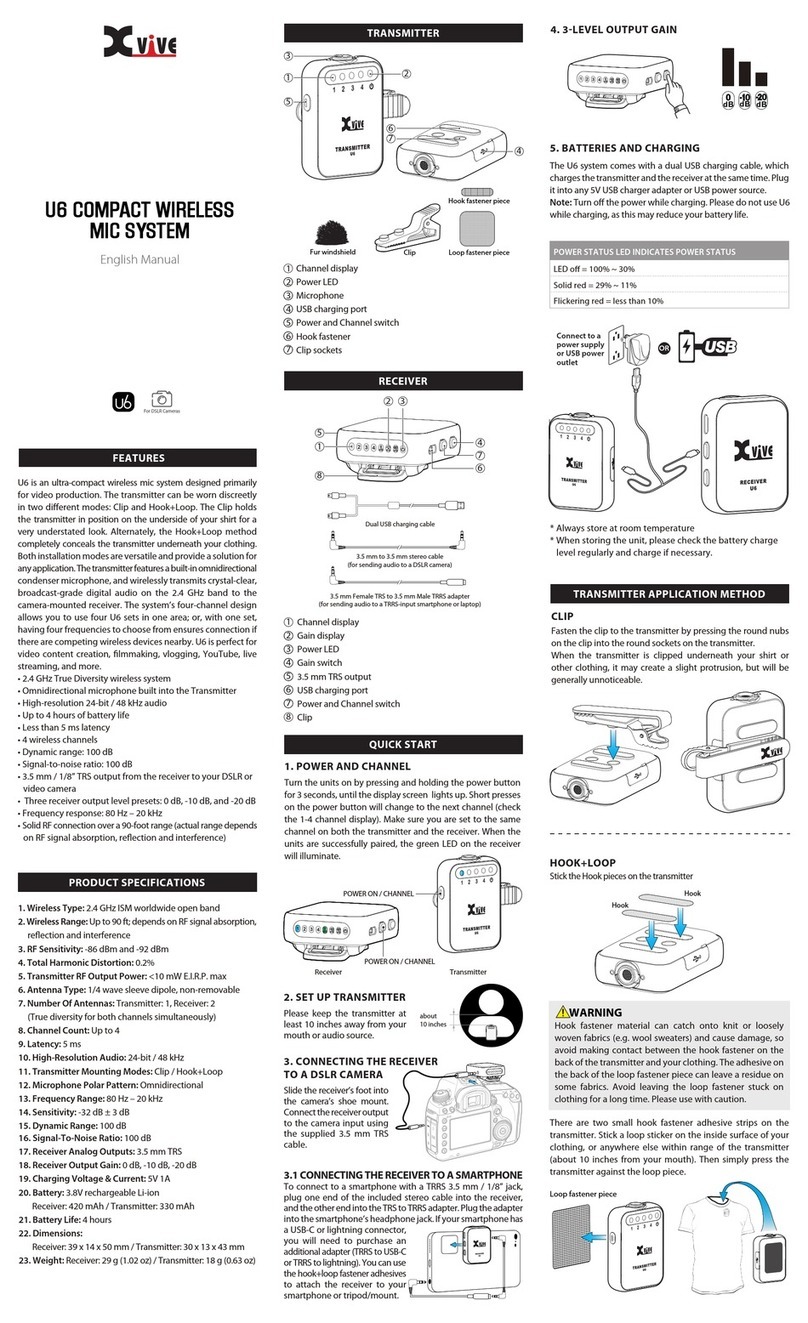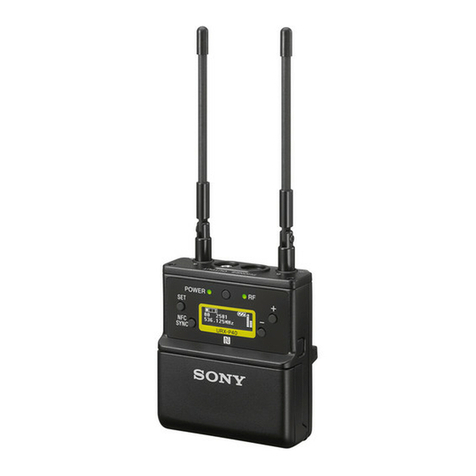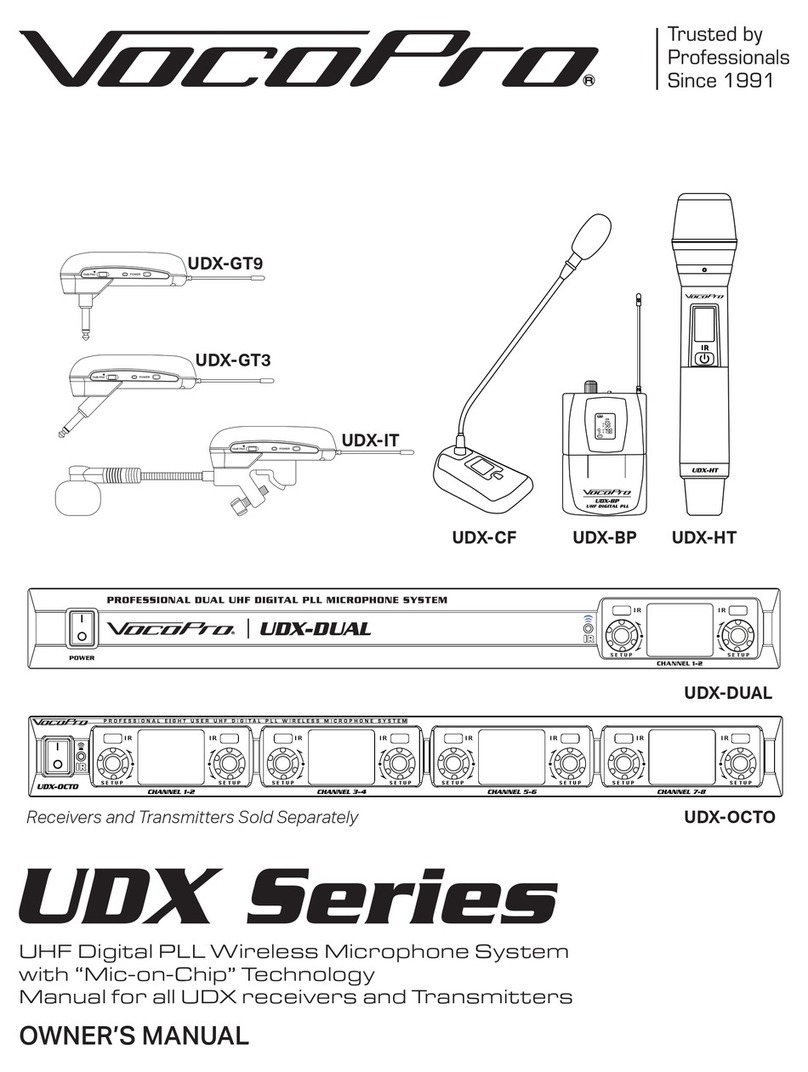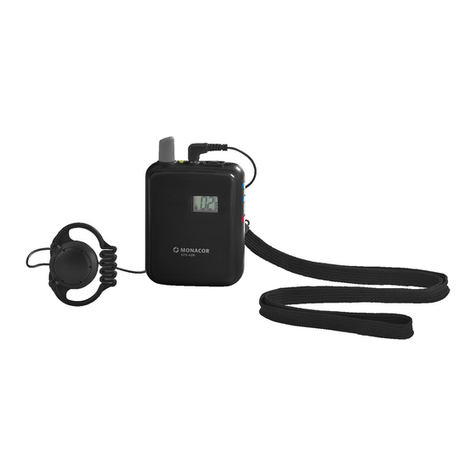BLiNQ Networks Inc. X-100 User manual

BLiNQ Networks Inc.
X-100 Intelligent Wireless Backhaul System
User Guide
Release 1.0
Issue 01
ebruary 2013

BLiNQ Networks Inc. X-100 User Guide Release 1.0
Confidential - Restricted Use and Du lication Page 1 of 91 Issue 01
Disclaimer
The statements, configurations, technical data, and recommendations in this document are believed to be accurate and
reliable, but are resented without ex ress or im lied warranty. Additionally, BLiNQ Networks makes no re resentations or
warranties, either ex ressed or im lied, regarding the contents of this roduct. BLiNQ Networks shall not be liable for any
misuse regarding this roduct. The information in this document is subject to change without notice.
Revision History
Date Issue Reason for Issue
February 2013 01 General Availability (GA) release.
Contact Information:
BLiNQ Networks Inc.
400 March Road, Suite 240
Ottawa, ON K2K 3H4
Web Site:
htt ://www.blinqnetworks.com
Sales Inquiries:
Email: sales@blinqnetworks.com
Tele hone: 1-613-599-3388 x280
Su ort:
Web: htt ://www.blinqnetworks.com/su ort
Email: su ort@blinqnetworks.com
Tele hone: 1-613-599-3388 x270
© Copyright 2012-2013 BLiNQ Networks Inc. All rights reserved.
CONFIDENTIAL INFORMATION
RESTRICTED USE AND DUPLICATION
The information contained herein is the ro erty of BLiNQ Networks Inc. and is strictly confidential. Exce t as ex ressly
authorized in writing by BLiNQ Networks Inc., the holder shall kee all information contained herein confidential, shall disclose
it only to its em loyees with a need to know, and shall rotect it, in whole or in art, from disclosure and dissemination to third
arties with the same degree of care it uses to rotect its own confidential information, but with no less than reasonable care.
Exce t as ex ressly authorized in writing by BLiNQ Networks Inc., the holder is granted no rights to use the information
contained herein.
BLiNQ and BLiNQ Networks Inc. cor orate logo are trademarks of BLiNQ Networks Inc. All other trademarks used in this
document are the ro erty of their res ective owners. The use of the word artner does not im ly a artnershi relationshi
between BLiNQ and any other com any.

BLiNQ Networks Inc. X-100 User Guide Release 1.0
Confidential - Restricted Use and Du lication Page 2 of 91 Issue 01
Table of Contents
1 X-100 System Overview ........................................................................................................................ 6
2 X-100 System Descri tion ..................................................................................................................... 9
3 Technical S ecifications ...................................................................................................................... 12
3.1 System Parameters ..................................................................................................................... 12
3.2 OFDMA and Frame Parameters .................................................................................................. 13
3.3 Integrated RBM Antenna ............................................................................................................ 13
3.4 System Enclosure ........................................................................................................................ 15
4 Link Budget and System Gain .............................................................................................................. 16
4.1 System Trade-offs ....................................................................................................................... 17
5 System Synchronization ...................................................................................................................... 19
5.1 Synchronization Services ............................................................................................................ 19
6 System Through ut ............................................................................................................................. 21
7 Element and Network Management .................................................................................................. 23
8 Ethernet Bridge Su ort ..................................................................................................................... 26
9 Installation Planning............................................................................................................................ 27
10 Using the X-100 WebUI ................................................................................................................... 28
10.1 Requirements .............................................................................................................................. 28
10.2 Common X-100 WebUI Page Items ............................................................................................. 29
10.3 Configuring Hub Modules ........................................................................................................... 30
10.3.1 Logging In ............................................................................................................................ 31
10.3.2 System Overview Page ........................................................................................................ 32
10.3.3 Setu Page (System) ........................................................................................................... 33
10.3.4 Setu Page (Radio Interface) .............................................................................................. 34
10.3.5 Bridge Page ......................................................................................................................... 35
10.3.6 RBMs Page (RBM General) .................................................................................................. 36
10.3.7 RBMs Page (Default Service) ............................................................................................... 37

BLiNQ Networks Inc. X-100 User Guide Release 1.0
Confidential - Restricted Use and Du lication Page 3 of 91 Issue 01
10.3.8 RBMs Page (RBM List) ......................................................................................................... 39
10.3.9 Performance Page (Ethernet) ............................................................................................. 40
10.3.10 Performance Page (RBMs) .............................................................................................. 40
10.3.11 Events Page (Alarms) ...................................................................................................... 42
10.3.12 Events Page (History) ...................................................................................................... 43
10.3.13 Admin Page (Management Interface) ............................................................................. 43
10.3.14 Admin Page (User Manager) ........................................................................................... 44
10.3.15 Admin Page (SNMP Settings) .......................................................................................... 45
10.3.16 Admin Page (Software U grade) .................................................................................... 46
10.3.17 Admin Page (Configuration Management) ..................................................................... 47
10.3.18 Admin Page (Syslog Server)............................................................................................. 48
10.4 Configuring RBMs ........................................................................................................................ 49
10.4.1 Logging In ............................................................................................................................ 50
10.4.2 System Overview Page ........................................................................................................ 50
10.4.3 Setu Page (System) ........................................................................................................... 51
10.4.4 Setu Page (Radio Interface) .............................................................................................. 51
10.4.5 Performance Page ............................................................................................................... 52
10.4.6 Events Page ......................................................................................................................... 52
10.4.7 Admin Page ......................................................................................................................... 52
11 Alarms and Events (Fault Management)......................................................................................... 53
12 Using the X-100 Command Line Interface ...................................................................................... 56
12.1 Overview ..................................................................................................................................... 56
12.2
Identify Command Context ......................................................................................................... 56
12.3 Logging On to the X-100 CLI ........................................................................................................ 57
12.4 Privileged EXEC Commands ........................................................................................................ 57
12.5 Global CONFIG Commands ......................................................................................................... 58
12.5.1 Radio CONFIG Mode ........................................................................................................... 59
12.5.2 User CONFIG Mode ............................................................................................................. 59

BLiNQ Networks Inc. X-100 User Guide Release 1.0
Confidential - Restricted Use and Du lication Page 4 of 91 Issue 01
12.5.3 RBM CONFIG Mode (Hub Modules Only) ........................................................................... 60
12.6 X-100 CLI Command Structure .................................................................................................... 62
12.7 X-100 CLI Command Line Prom ts .............................................................................................. 63
12.8 X-100 CLI Keywords and Parameters .......................................................................................... 64
12.8.1 Keywords ............................................................................................................................. 64
12.8.2 Parameters .......................................................................................................................... 64
12.8.3 Keywords and Parameters Together .................................................................................. 65
12.9 Saving Configuration Changes Made Through the X-100 CLI .................................................... 65
12.10 Writing and Running X-100 CLI Scri ts .................................................................................... 67
12.11 Using Hel ............................................................................................................................... 67
12.11.1 ? (Question Mark Key) .................................................................................................... 68
12.11.2 hel Command ................................................................................................................ 69
12.11.3 Partial-keyword <Tab> .................................................................................................... 70
12.12 U grading System Software Through the X-100 CLI ............................................................... 71
13 System Provisioning ........................................................................................................................ 73
13.1 Initial System Setu and IP Configurations ................................................................................. 73
13.2 Adding Users ............................................................................................................................... 76
13.3 Provisioning Default Versus Individual Service Flows ................................................................. 77
13.4 Configuring and Adding Individual RBMs .................................................................................... 77
14 Preambles, Flows, and Network Provisioning ................................................................................. 83
14.1 Preamble Functional Descri tion ................................................................................................ 83
14.2 Preamble O erational Descri tion ............................................................................................. 84
14.3 Provisioning Preambles ............................................................................................................... 84
14.4 Provisioning HM Service Flow Definitions .................................................................................. 87
14.5 Provisioning Multi le Clusters Within the Same Area ................................................................ 87
15 A endices ...................................................................................................................................... 89
15.1 BLiNQ Wireless Devices and RF Safety ........................................................................................ 89
15.2 List of Acronyms .......................................................................................................................... 90

BLiNQ Networks Inc. X-100 User Guide Release 1.0
Confidential - Restricted Use and Du lication Page 5 of 91 Issue 01
List of Figures
FIGURE 1 BLINQ X-100 SYSTEM IN A WIRELESS BACKHAUL APPLICATION .................................................................................... 6
FIGURE 2 BLINQ X-100 HUB MODULE (HM) AND REMOTE BACKHAUL MODULE (RBM) ............................................................... 8
FIGURE 3 HORIZONTAL ANTENNA PATTERN (PORT 1) FOR 3.5 GHZ BAND ................................................................................... 14
FIGURE 4 PERFORMANCE VERSUS DISTANCE FOR 256 QAM 5/6 MCS ...................................................................................... 18
FIGURE 5 SYSTEM SYNCHRONIZATION THROUGH GPS ............................................................................................................. 20
FIGURE 6 SYSTEM SYNCHRONIZATION THROUGH IEEE 1588V2 ................................................................................................ 20
FIGURE 7 MODULE CASING LABEL EXAMPLE ......................................................................................................................... 27
List of Tables
TABLE 1 OVERVIEW OF MAIN X-100 SYSTEM CHARACTERISTICS ................................................................................................. 7
TABLE 2 GENERAL X-100 SYSTEM PARAMETERS .................................................................................................................... 12
TABLE 3 OFDMA AND FRAME PARAMETERS FOR A 10 MHZ CHANNEL BANDWIDTH .................................................................... 13
TABLE 4 INTEGRATED ANTENNA SPECIFICATIONS IN THE 3.65 GHZ BAND ................................................................................... 14
TABLE 5 LINK BUDGET FOR X-100 SYSTEM AT 3.65 GHZ IN A 2X2 MIMO-SM OPERATION .......................................................... 16
TABLE 6 NLOS RANGE AT 3.65 GHZ FOR 2X2 MIMO-SM MODE ........................................................................................... 17
TABLE 7 SYSTEM GAIN FOR LOWER MODULATION AND CODING SCHEMES; INCLUDES MAXIMAL RATIO COMBINING (MRC) GAIN ........ 17
TABLE 8 THROUGHPUT PERFORMANCE FOR CYCLIC PREFIX OF 1/8 ............................................................................................ 21
TABLE 9 THROUGHPUT PERFORMANCE FOR CYCLIC PREFIX OF 1/16 .......................................................................................... 22
TABLE 10 LIST OF ALARMS ................................................................................................................................................. 53
TABLE 11 LIST OF EVENTS .................................................................................................................................................. 55
TABLE 12 HELP COMMANDS .............................................................................................................................................. 67
TABLE 13 LIST OF ACRONYMS ............................................................................................................................................. 90

BLiNQ Networks Inc. X-100 User Guide Release 1.0
Confidential - Restricted Use and Du lication Page 6 of 91 Issue 01
1X-100 System Overview
igure 1 BLiNQ X-100 System in a Wireless Backhaul Application
BLiNQ Networks is a ioneer of next-generation wireless backhaul solutions that feature intelligent
systems ca able of ada ting to the radio frequency environment to maximise ca acity and
erformance.
The BLiNQ X-100 system o erates in the sub 6 GHz licensed frequency bands and are designed for Non-
Line-of-Sight (NLOS) o eration by incor orating advanced hysical layer and medium access control
layer algorithms and techniques. BLiNQ has develo ed ro rietary interference mitigation algorithms
and incor orated self-organizing network techniques into its solutions to increase ca acity and reliability
beyond that of ordinary backhaul solutions. This is because in a NLOS environment, interference and
shadowing are the two main reasons that limit ca acity and link reliability. Mitigating interference and
enhancing signal reliability maximizes system erformance.
The X-100 system delivers 8 b/s/Hz s ectral efficiency. The system is designed for use in multi le
a lications that includes mobile backhaul, o tical fibre cable extension and cor orate and enter rise
data backhaul services by roviding over 80 Mb s of through ut in a 10 MHz channel. The interference
mitigation technology allows network o erators to de loy a greater density of wireless links in a small
s ectrum allocation (such as 10 or 20 MHz).
The X-100 system o erates in non-exclusive licensed Time Division Multi lexing (TDD) band 3.65 – 3.7
GHz in both Point-to-Point (PTP) and Point-to-Multi oint (PMP) configurations. Some of the main
roduct characteristics are shown in Table 1. The X-100 system incor orates Multi le In ut Multi le
Out ut (MIMO technology and o erates at high Modulation and Coding Scheme (MCS) rates to rovide
high ca acity. In addition, the roduct incor orates BLiNQ’s interference management techniques which
include multi le ower control algorithms to maximize erformance in dense networks.
The X-100 system using a 10 MHz channel em loys a large number of sub-carriers (1024) which hel s

BLiNQ Networks Inc. X-100 User Guide Release 1.0
Confidential - Restricted Use and Du lication Page 7 of 91 Issue 01
o timize bandwidth use. A large number of sub-carriers yields a long symbol time because the minimum
symbol time is inversely ro ortional to the sub-carrier bandwidth. Transmitted signals are subject to
time delay dis ersion because of multi le aths. While the most direct ath might involve no
reflections, other aths involve one or more thus resenting the signal with longer ath lengths and
hence longer transit times. To revent interference between successive symbols due to this dis ersion,
a ga called the cyclic refix (or guard time) is added to each symbol. Dis ersion dictates a cyclic refix
length of about 3-5 µsec in urban areas where small cells are de loyed. For short symbol times on the
order of a few µsec the added cyclic refix would substantially cut into the useful bandwidth. For the
longer symbol times used by the X-100 system the cyclic refix is only a small fraction of the total
bandwidth.
Table 1 Overview of Main X-100 System Characteristics
Duplex Mode
Time Division Multi lexing (
TDD
)
Physical Layer
/Antenna
System
1024 sub
-
carrier
OFDM
–
NLOS
2x2 MIMO
Operation Configuration
Point
-
to
-
P
oint
Point-to-Multi oint
Throughput
Total
83
Mb s
shared between DL
and
UL
de ending on user defined TDD DL/UL
traffic ratios; e.g. DL 53 Mb s for 65:35
traffic ratio (user selectable in X-100
WebUI through Setu Page).
requency of Operation
3.6
5
–
3.
7
GHz
(
non
-
exclusive license
d
band)
Channel
Bandwidth
10
MHz
Network Interface
Ethernet
(Fiber o tional for Hub)
Quality of Service (QoS)
Two
classes
: Guaranteed Bit Rate (GBR)
and Best Effort (BE)
orm actor
All
-
outdoor; zero
-
foot rint

BLiNQ Networks Inc. X-100 User Guide Release 1.0
Confidential - Restricted Use and Du lication Page 8 of 91 Issue 01
igure 2 BLiNQ X-100 Hub Module (HM) and Remote Backhaul Module (RBM)
The X-100 system consists of the following modules:
•Hub Modules (HMs): These are sector controllers that control several RBMs. Hub Modules
feature two RF connectors for an external user-defined sectored antenna.
•Remote Backhaul Modules (RBMs): These are subscriber units that are installed outdoors on
customer remises, including ublic infrastructure assets such as light and utility oles in mobile
backhaul a lications. The RBMs feature an integrated antenna.
•Configuration System: This consists of the X-100 WebUI tool and X-100 CLI for configuration
management, as well as fault and erformance management.
Note: Fault and erformance management is also made available through a standard Sim le
Network Management Protocol (SNMPv2C/v3) interface to existing third- arty managing
a lications such as element/network management systems (EMSs/NMSs).
The X-100 system has a small, all-outdoor, zero-foot rint form factor that can be easily de loyed on
towers, oles, building sidewalls, or roofto s unobtrusively.
Remote Backhaul
Module (RBM)
Hub Module (HM)
(The RBM mechanical enclosure
is similar to the Hub Module,
exce t that the RF connectors,
the SFP rece tacle and the
integrated GPS antenna are
absent).

BLiNQ Networks Inc. X-100 User Guide Release 1.0
Confidential - Restricted Use and Du lication Page 9 of 91 Issue 01
2X-100 System Descri tion
The BLiNQ X-100 system is designed to meet the requirements of network o erators for high ca acity
and reliability in small cell base station backhaul a lications, as well as in a number of other
a lications. The system can function either as Point-to-Point (PTP) or Point-to-Multi oint (PMP)
wireless Ethernet bridge equi ment. Some of the main roduct characteristics include:
Orthogonal requency-Division Multiple Access (O DMA) Physical Layer: This includes 1024 sub-
carriers (data, ilot and guard-band). The OFDMA hysical layer cou led with multi le antenna
technology rovides robust erformance in a non-line-of-sight (NLOS) environment.
Time Division Duplex (TDD): The X-100 system features TDD access mode with variable frame length
(user selectable 3.125 and 5 msec). The TDD frame includes the downlink and u link sub-frames. Each
subframe includes a number of OFDM symbols which are assigned to different Remote Backhaul
Modules (RBMs). The length of each sub-frame determines the traffic ratio for downlink and u link
traffic and is a user settable arameter.
Note: Frame length of 3.125 msec not su orted in current release.
Multiple Input Multiple Output (MIMO): The X-100 system features s atial multi lexing on two
antennas (2x2) for high ca acity.
Adaptive Modulation with Link Adaptation: The X-100 system su orts QPSK, 16QAM, 64QAM and
256QAM on both the downlink and u link ath to achieve high ca acity in limited channel bandwidth
(83 Mb s Ethernet layer through ut in a 10 MHz channel for combined downlink and u link traffic).
Note: Total 71.5 Mb s through ut is in effect this release.
Intelligent Interference Management: The X-100 system im lements the BLiNQ ro rietary Managed
Ada tive Resource Allocation (MARA) algorithm to identify the links with highest interference in the
backhaul network and to manage the transmission of backhaul nodes to eliminate interference. The
MARA algorithm im roves ca acity and link reliability. It also reduces the o erational and ca ital costs
associated with site design, de loyment and o timization activities as interference is automatically
identified and mitigated, thereby reducing the design and o timization effort required from RF
engineers and field technicians.
Backhaul Self-Organizing Networks: The X-100 system eriodically characterizes the radio frequency
(RF) environment in the backhaul network to account for changes such as de loyment of new sites or
changes that affect interference (for exam le, foliage, variation between seasons, new building
construction). The measurements, termed RF Environment Characterization (RFEC), are ty ically
scheduled by the o erator to run at a certain time of the day and used in MARA/ ower control
algorithms.
Power Control: The X-100 system incor orates ower control on both the downlink and u link streams
to minimize interference at hysical layer and maximize ca acity. Two ty es of ower control are
im lemented: link level and network level. Link-level ower control o timizes the ower for a certain
link to meet its ca acity requirements, whereas network-level ower control o timizes link ower based
on network level constraints to maximize network erformance.

BLiNQ Networks Inc. X-100 User Guide Release 1.0
Confidential - Restricted Use and Du lication Page 10 of 91 Issue 01
Antennas: The X-100 Remote Backhaul Modules (RBMs) integrate a s ecially designed slant-45 cross-
olarized antenna to reduce interference and rovide high co- olar isolation between the two branches.
For exam le, the sidelobe level in the azimuthal lane is 8 dB below Euro ean Telecommunications
Standards Institute (ETSI) Directory Number (DN) 4and 5 mask requirements and 15 dB below ETSI DN 2
mask requirements.
Point-to-Multipoint (PMP) with Dynamic Bandwidth Allocation: The X-100 system can o erate in PTP
or PMP configurations with u to four RBMs. The ca acity allocated to each RBM is variable according to
subscriber requirements (for exam le, com act base station).
Quality of Service (QoS): Two levels of QoS are defined in the X-100 system for traffic classification:
Guaranteed Bit Rate and Best Effort. Through service-level agreements (SLAs), customers can subscribe
to the service class desired for their a lication.
Service Class Description
GBR Guaranteed Bit Rate
Provides the most stringent scheduling, maintaining
guarantees on through ut, latency, and jitter to the levels
necessary for synchronization/timing ackets such as NTP
v4.0 and Time Division Multi lexed (TDM) services.
BE Best Effort
No guaranteed minimum through ut. For data streams for
which no minimum service level is required and therefore
may be handled on a s ace-available basis.
Traffic Classification: Ethernet traffic is classified by the Layer 2 (L2) Media Access Control (MAC) source
and destination address, 802.1 /Q settings, differentiated services code oint (DSCP) and ty e of service
(ToS) bits, L3 IP source and destination address, and rotocol.
orm actor: The all-outdoor, zero-foot rint Hub Module (HM) and RBMs are built to IP67 requirements
for o eration in tough environments with the ca ability to handle large variations in tem erature from
extreme cold to extreme heat.
High-level of Integration: The X-100 systems are highly integrated and include:
•The RBM which integrates a high-gain 17 dBi antenna. The RBM derives its synchronization from
the Hub Module.
•The HM which integrates a com lete Global Positioning System (GPS) antenna and receiver with
high holdover (10 minutes). Therefore, no additional synchronization module is required for the
X-100 system, which reduces the total cost of ownershi of the solution while sim lifying and
accelerating installation.
The X-100 system is small in size (31x21x8 cm) and low in weight (3.5 kg) so it can be easily mounted on
the network o erator’s existing tower assets. The small size and weight allows quick de loyment of the
RBMs at customer remises in different enter rise/cor orate data backhaul a lications or other ty es
of industrial and commercial a lications.
All modules offer a standard RJ45 Ethernet ort, while the Hub Module offers o tional o tical
connectivity through a field-installable SFP o tical transceiver module.

BLiNQ Networks Inc. X-100 User Guide Release 1.0
Confidential - Restricted Use and Du lication Page 11 of 91 Issue 01
The BLiNQ X-100 system also rovides the following network management features:
•ault and Performance Management: The X-100 system incor orates fault and erformance
management through a standard Sim le Network Management Protocol (SNMP)v2c interface.
For this BLiNQ rovides its Management Information Base (MIB) to network o erators for
integration into existing third- arty managing a lications such as element/network
management systems (EMSs/NMSs), thereby roviding access to key information on X-100
service availability and erformance.
•Configuration Management: BLiNQ roducts are designed to minimize the configuration effort
by the network o erator. For exam le, when de loyed in the field, the X-100 system can obtain
its IP address through DHCP rather than have it statically assigned by the user. Further, the X-
100 system rovides a web-based configuration tool called the X-100 WebUI and a standard
Command Line Interface (CLI) that run directly on the X-100 equi ment.
•Software Upgrade: BLiNQ roducts are field u gradeable through remote download and
activation of software release u grades.

BLiNQ Networks Inc. X-100 User Guide Release 1.0
Confidential - Restricted Use and Du lication Page 12 of 91 Issue 01
3Technical S ecifications
3.1 System Parameters
Table 2 shows general X-100 system arameters.
Table 2 General X-100 System Parameters
Access Technology
Orthogonal Frequency
-
Division Multi lexing (OFDM)
Non
-
Line
-
of
-
Sight (NLOS)
R Bands
3.6
5
–
3.
7 GHz
Channel Size
(Bandwidth)
10 MHz
Data Rate
U to
83
Mb s
(Layer 2/Ethernet)
Tx Power
2
3
dBm / 0.
2
W ( er antenna ort,
two
orts)
Duplex Mode
Time Domain Du lex (TDD)
Modulation & Coding
Quadrature Phase Shit Keying (
QPSK
)
, 16/64/256 QAM; Bi
directional
Dynamic Ada tive Convolutional Turbo Codes
Advanced Antenna Systems
2x2
Multi le In ut Multi le
Out ut (
MIMO
)
/ S atial Multi lexing
Antenna
Remote Backhaul Module (
RBM
)
: Integrated 17 dBi gain
Hub Module (HM): External antenna
Synchronization
Global Positioning System (
GPS
)
; IEEE 1588v2
Encryption
AES
-
128
Network Interface
1
Co er: RJ45
10
0
BaseT
Ethernet
Fiber (O tional on HM): O tical Gigabit Ethernet
Network Attributes
Ethernet bridge
, 802.1Q, 802.1ad, DSCP/ToS/802.1 (IPv4/IPv6) and
QinQ Tagging
Power Requirement
-
48 VDC
Power Consumption
35
W
(ty ical); 65 W (max)
Operating Temperature
-
40
°
C to 55
°
C
Weight
<3.8
kg
/ 7.7 lbs
Dimensions
31 x 21.8 x 8.3
cm
Humidity
U to 95% non
-
condensing
Compliance
EMC:
FCC Part 15,
EN 301 489
-
1
RF: ETSI EN 302 326, EN 302 544, ECC/REC/(04)05
, FCC Part 27,
FCC Part 90
Safety: IEC, EN and UL/CSA 60950
Environmental: IP 67
System Configuration
X
-
100
WebUI/X
-
100
CLI
ault
and Performance
Management
Sim le Network Management Protocol (
SNMP
)
v2
C/v3
1The co er Ethernet interface on the HM has riority over the fiber o tical Gigabit Ethernet interface. If, for
exam le, an on-site technician connects to the HM locally by the co er interface while the HM is roviding
network services to its users through the fiber interface, the fiber interface is then disabled and taken out of
service. Network service through the fiber interface is restored when the co er interface is disconnected.

BLiNQ Networks Inc. X-100 User Guide Release 1.0
Confidential - Restricted Use and Du lication Page 13 of 91 Issue 01
3.2 OFDMA and Frame Parameters
Orthogonal Frequency-Division Multi le Access (OFDMA) and Frame Parameters for 10 MHz channel
bandwidth o tion are shown in Table 3. The frame duration or size is a user settable feature in the X-100
WebUI (through the Setu Page for the Radio Interface) and is art of system configuration.
Table 3 O DMA and rame Parameters for a 10 MHz Channel Bandwidth
Number of Subcarriers 1024
Data Carriers 720
Pilot Subcarriers 120
Subcarrier Spacing 10.9375 KHz
rame Duration or Size 5 msec 3.125 msec
rames per Second 200 320
Cyclic Prefix 1/8 1/16 1/8
1
1/16
Number of Symbols 48 51 30
1
32
3.3 Integrated RBM Antenna
The Remote Backhaul Module (RBM) features a high-quality antenna that has very low side lobes (-30
dBc) to minimize interference. This allows greater scalability of de loyment of BLiNQ X-100 system
modules in a market and allows smaller frequency reuse factor for higher s ectrum utilization. Figure 3
shows the antenna atterns and com ares them to standard off-the-shelf antennas ty ically available in
commercial systems such as WiMAX Customer Premise Equi ment (CPE) and other backhaul devices in
the 3.5 GHz band.
High gain (17 dBi) and directivity (narrow horizontal beamwidth of 22 degrees) work to increase system
gain and reduce the interference transmitted and received at angles away from the boresight of the
antenna. This is critical for small cell mobile backhaul a lications as the backhaul network is
interference limited. It also works to increase the range in other ty es of a lications where distance is
the overriding factor.

BLiNQ Networks Inc. X-100 User Guide Release 1.0
Confidential - Restricted Use and Du lication Page 14 of 91 Issue 01
igure 3 Horizontal antenna pattern (Port 1) for 3.5 GHz band
Table 4 Integrated Antenna Specifications in the 3.65 GHz Band
Gain 17.0 ± 1 dBi
Voltage Standing Wave Ratio
(VSWR)
1.8:1 (max) 1.5:1 (ty )
-3 dB Azimuth Beam Width 22.5° ± 2°
-3 dB Elevation Beam Width 27° ± 3°
AZ and EL Beam Squint ± 2 °
Polarization Dual Slant ± 45°
Port To Port Isolation 22 dB (min), 28 dB (ty )
ront to Back ( /B) Ratio -45 dB (ty )
BLiNQ’s RBM
Antenna Performance
Mask for off the
shelf antennas

BLiNQ Networks Inc. X-100 User Guide Release 1.0
Confidential - Restricted Use and Du lication Page 15 of 91 Issue 01
3.4 System Enclosure
The enclosure for both the Hub and RBM is a rugged IP67 casing su lied with an o tional mounting
bracket with both horizontal and vertical tilt ca abilities to mount the unit on towers, oles, and
building side walls while allowing full flexibility in the range of orientation to establish best connectivity
between the Hub and RBMs.
In Figure 2, the mechanical enclosure for the HM has two RF ort connectors for an external user-
defined sectored antenna. Two connectors are also rovided on the back of the HM: a -48 VDC ower
connector, and an RJ45 connector for 1000 BaseT co er Ethernet network connectivity. An o tional
small form-factor luggable (SFP) fiber connector for o tical Gigabit Ethernet network connectivity can
also be installed in the field. An integrated Global Positioning System (GPS) antenna is shown on the to
(flat square atch). Therefore, no additional synchronization equi ment is required to reduce total cost
of ownershi .
Note: The co er Ethernet interface on the HM has riority over the fiber o tical Gigabit Ethernet
interface. If, for exam le, an on-site technician connects to the HM locally by the co er interface while
the HM is roviding network services to its users through the fiber interface, the fiber interface is then
disabled and taken out of service. Network service through the fiber interface is restored when the
co er interface is disconnected.
The RBM is the exact same size and dimension as the HM. It differs in that the antenna is integrated,
hence there are no external RF connectors. Also, the RBM does not include an integrated GPS antenna
as synchronization is available from the HM. There is also no rovision for an SFP fiber connector.

BLiNQ Networks Inc. X-100 User Guide Release 1.0
Confidential - Restricted Use and Du lication Page 16 of 91 Issue 01
4Link Budget and System Gain
Table 6 lists the link budget for the BLiNQ X-100 system at 3.65 GHz in a 2x2 Multi le In ut Multi le
Out ut-S atial Multi lexing (MIMO-SM) o eration.
The X-100 system rovides very high system gain (134 dB for 256 Quadrature Am litude Modulation
[QAM] 5/8 Modulation and Coding Scheme [MCS]). This is due to a relatively high transmit ower for
both the Hub and Remote Backhaul Modules (RBMs) (27 dBm er antenna ort; a total of 30 dBm).
The X-100 system gain allows network design to incor orate a high fade margin to combat shadow and
fast fading and enable high link availability in urban areas which is im ortant in small cell mobile
backhaul a lications. Alternatively, high system gain translates into longer range in a lications where
this is required.
Table 5 Link Budget for X-100 System at 3.65 GHz in a 2x2 MIMO-SM Operation
Transmitter
256-
QAM
7/8
256-
QAM
6/8
256-
QAM
5/8
64-
QAM
5/6
64-
QAM
3/4
64-
QAM
2/3
64-
QAM
1/2
Units
Power per Stream 23 23 23 23 23 23 23 dBm
Hub Antenna Gain 17 17 17 17 17 17 17 dBi
Tx Losses 0.25 0.25 0.25 0.25 0.25 0.25 0.25 dB
EIRP (per Stream) 39.8 39.8 39.8 39.8 39.8 39.8 39.8 dBm
Receiver
256-
QAM
7/8
256-
QAM
6/8
256-
QAM
5/8
64-
QAM
5/6
64-
QAM
3/4
64-
QAM
2/3
64-
QAM
1/2
Units
Thermal oise -174 -174 -174 -174 -174 -174 -174 dBm/Hz
oise Figure 4 4 4 4 4 4 4 dB
oise BW (per
Tone) 10.9375 10.9375 10.9375 10.9375 10.9375 10.9375 10.937
5 kHz
Receive oise
Floor (per Tone) -129.6 -129.6 -129.6 -129.6 -129.6 -129.6 -129.6 dBm
RBM Antenna
Gain 17 17 17 17 17 17 17 dBi
Required RX
Power per Branch -65.5 -74.4 -75.5 -76.8 -78.7 -79.7 -83.6 dBm
System Gain (dB) 122.3 131.2 132.3 133.6 135.5 136.5 140.4 dB

BLiNQ Networks Inc. X-100 User Guide Release 1.0
Confidential - Restricted Use and Du lication Page 17 of 91 Issue 01
Table 7 shows the system gain at 3.65 GHz for different modulation rates and the associated ca acity
and Non-Line-of-Sight (NLOS) distance for 99.9% availability in urban and rural environments.
Table 6 NLOS Range at 3.65 GHz for 2x2 MIMO-SM Mode
Modulation System Gain (dB)
Capacity (Mbps)
NLOS (m)
(99.9% Link Availability)
Urban (SUI 5/6) Rural (SUI 1/2)
256QAM7/8 122.25 83 243 425
256QAM6/8 131.15 71 373 700
256QAM5/8 132.25 61 454 880
64QAM5/6 133.55 59 483 946
64QAM3/4 135.45 53 529 1,052
64QAM2/3 136.45 47 555 1,113
64QAM1/2 140.35 35 669 1,384
The system gain for maximum distance calculations for the lower modulation schemes is shown in Table
8 for a single antenna o eration (that is, Single In ut Single Out ut [SISO]) with receive diversity gain of
3 dB included to account for 2-branch maximal ratio combining.
Table 7 System Gain for Lower Modulation and Coding
Schemes; Includes Maximal Ratio Combining (MRC) Gain
Modulation Required Rx Power (dBm) System Gain (dB)
16
QAM3/4
-
85
144
.75
16
QAM2/3
-
88.7
148
.45
Q
PSK3/4
-
91.3
151
.05
4.1 System Trade-offs
Range, ca acity and reliability are three factors that can be traded off against each other. The higher the
fade margin, the lower the reach of the X-100 is to achieve a certain ca acity target. For exam le, Figure
shows a system gain of 136 dB for 256-QAM 5/8 MCS which results in a through ut of 61 Mb s.
Budgeting 25 dB of fade margin for 99.9% availability results in a maximum allowable ath loss of 136-
25 = 111 dB, or a corres onding range of just over 400 m. Higher reliability is ossible by using a larger
fade margin which reduces the distance. Alternatively, higher reliability can be achieved at this range
with a lower MCS such as 64-QAM 3/4.

BLiNQ Networks Inc. X-100 User Guide Release 1.0
Confidential - Restricted Use and Du lication Page 18 of 91 Issue 01
igure 4 Performance Versus Distance for 256 QAM 5/6 MCS
The BLiNQ ro rietary Managed Ada tive Resource Allocation (MARA) interference management
technology built into the X-100 system contributes to increasing the link availability while also roviding
higher ca acity.

BLiNQ Networks Inc. X-100 User Guide Release 1.0
Confidential - Restricted Use and Du lication Page 19 of 91 Issue 01
5System Synchronization
The X-100 system is a Time Division Multi lexed (TDD) radio system. Therefore, X-100 networks require
ro er synchronization of the air interface to rovide o timal service. The X-100 system is designed to
rovide flexible synchronization o tions as well as rovide a high- erformance extension to existing
synchronization networks to rovide quality clock services to downstream devices such as small-cells.
The X-100 system is synchronized at the Hub Module (HM) using one of two standard synchronization
mechanisms: Global Positioning System (GPS) or IEEE 1588v2.
When configured to synchronize on GPS, the X-100 system uses its internal GPS antenna and receiver
module to synchronize to the GPS network. This allows all X-100 HMs de loyed in the network to
accurately synchronize their transmit and receive o erations on the air interface. The GPS system also
allows the X-100 system to determine accurate time of day and date information. This time information
together with a user configured timezone setting is used to inform time across the system and is
essential in functions such as fault management (for exam le, event and alarm timestam ing) and
historical erformance (for exam le, erformance indicator rocessing and erformance file creation).
Time information is automatically transmitted from the HM to any Remote Backhaul Module (RBM)
associated to that HM.
When configured to synchronize on IEEE 1588v2, the X-100 system synchronizes to IEEE 1588v2 master
clocks de loyed on the o erator network. The HM can either be configured to use a s ecific master
clock (by roviding the master clock identity) or can erform the standard Best Master Clock (BMC)
Algorithm to select the best available master clock on the network. Just like GPS, the IEEE 1588v2
infrastructure allows the HM to recisely synchronize its air interface. It also rovides accurate time of
day information.
The X-100 system includes a high erformance crystal oscillator that allows it to maintain its clock
ro erties (Holdover) even if the rimary clock reference (that is, GPS or IEEE 1588v2) is no longer
available. The system is designed to rovide a Holdover eriod of 10 minutes. During this time the radio
is o erational and the system attem ts to recover its rimary clock source. If the clock source has not be
reacquired after the Holdover eriod ex ires, the system is deemed “Not synchronized” and therefore
ceases radio o eration so as to not interfere with other de loyed X-100 systems.
5.1 Synchronization Services
Based on its high- erformance internal synchronization mechanisms, the X-100 system is designed to
rovide in-band synchronization services to downstream devices using the IEEE 1588v2 rotocol. The
HM and RBMs include IEEE 1588 ca able Ethernet PHY modules that rovide accurate hardware based
timestam ing, necessary for high- erformance synchronization a lications.
The X-100 system su orts two o erating modes for synchronization services, de ending on the rimary
clock reference used at the HM: GPS or IEEE 1588v2..
Table of contents

